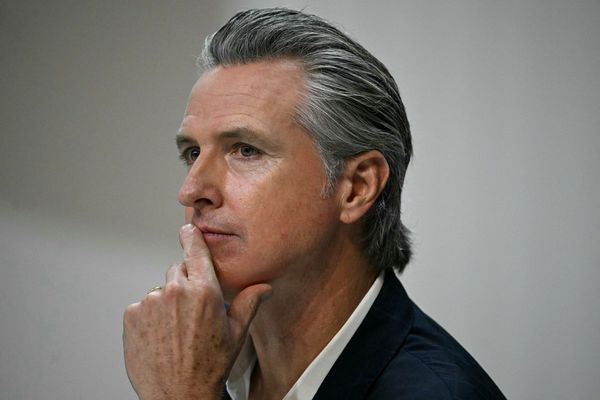
When Paris’s monumental cathedral – which had sat like a celestial wonder in the centre of Île de la Cité for over 800 years – caught fire in 2019, the world fell into a shocked and reverential silence. At the time, some people criticised this global mourning as crass and misplaced: why were we grieving the loss of a building, they asked, when so much human suffering goes unnoticed? The Australian Brandenburg Orchestra (ABO) doesn’t answer that question directly, but this new work goes a long way to explaining the source and perhaps even the purpose of that grief.
The orchestra has teamed up with playwright and librettist Alana Valentine to create a work that traverses a number of different disciplines, from baroque concert to dramatic monologue via video projection – all orbiting the history and destruction of Notre Dame. The music is largely drawn from centuries of French composition, written for or performed in the cathedral itself; Jean-Philippe Rameau is most represented, although there is a composition from the legendary Hildegard von Bingen, and even a contemporary piece by Hugh Ronzani.

Naturally, the vibe is a bit churchy. Projections on the back wall of the recital centre deliberately evoke the arched stained glass windows of Notre Dame, and much of the music tends to the lofty and ethereal. But Valentine and ABO artistic director Paul Dyer – who also conducts from the centre of the stage while playing harpsichord – are both deeply attuned to the secular appeal of the building, its cultural as much as its religious place in French history. The work is reverent but also witty and joyous. Most of all, it’s inclusive.
Matilda Ridgway – with an infectious amount of energy and enthusiasm – plays a young Aussie civil engineer who travels to Paris to help with restoration works on Notre Dame, a dream job she’s coveted for years. When she arrives, she meets a mysterious tour guide who turns out to be the ghost of Victor Hugo (Glenn Hazeldine).
That might seem an odd dramaturgical choice, but Hugo’s descriptions of the church in his legendary novel The Hunchback of Notre Dame formed a large part of the building’s mystique. He shares with the engineer his veneration and awe at the scale and glory of the cathedral, which is augmented and echoed in the precision and harmony of the music. And then, disaster strikes as the cathedral fills with smoke.

The projections, as well as Trent Suidgeest’s clever lighting design, conjure the majesty of the building, its romance and drama. At one point, footage of Lon Chaney as the Hunchback from the 1923 silent film plays hauntingly over Marin Marais’s Sonnerie de Saint Geneviève du Mont-de-Paris. Later, scenes of the fire – and most potently, photos of onlookers standing in horrified silence – are accompanied by the jagged dissonance of Jean-Féry Rebel’s Le Cahos from Les Élémens. Text and context are expertly calibrated. There is a clear movement from the majesty of the building’s past, through the tragedy and catharsis of its destruction into the hope of its restoration.
The Brandenburg choir create and sustain some truly celestial harmonies, although some soloists do stand out. Bonnie de la Hunty is sublime in von Bingen’s O virga ac diadema, and Eric Peterson and Michael Burden display crystalline vocal tone throughout. The ABO plays with great suppleness and finesse, particularly in Rameau’s overture from Les Fêtes de Polymnie and Jean-Baptiste Lully’s Passacaille from Armide. Those baroque instruments are completely transportive, capable of folding time itself.
Notre Dame is one of those oddities on paper that works an absolute treat in performance. Valentine’s script, with its internal rhyming and heightened poetic register, is cleverly attuned to the music surrounding it, and the integration of Hugo’s soaring prose exulting the grand dame is deeply persuasive. Notre Dame was never just a building; it was a symbol of human ingenuity and faith. Its loss was devastating, but the ABO manage to convince us that its restoration is more than an act of architectural repair: it’s a rehabilitation of our collective soul. Come, behold the works!
Notre Dame by the Australian Brandenburg Orchestra is on at Melbourne Recital Centre 24 and 25 February, then Sydney’s City Recital Hall 27-28 February and 1-3 March







